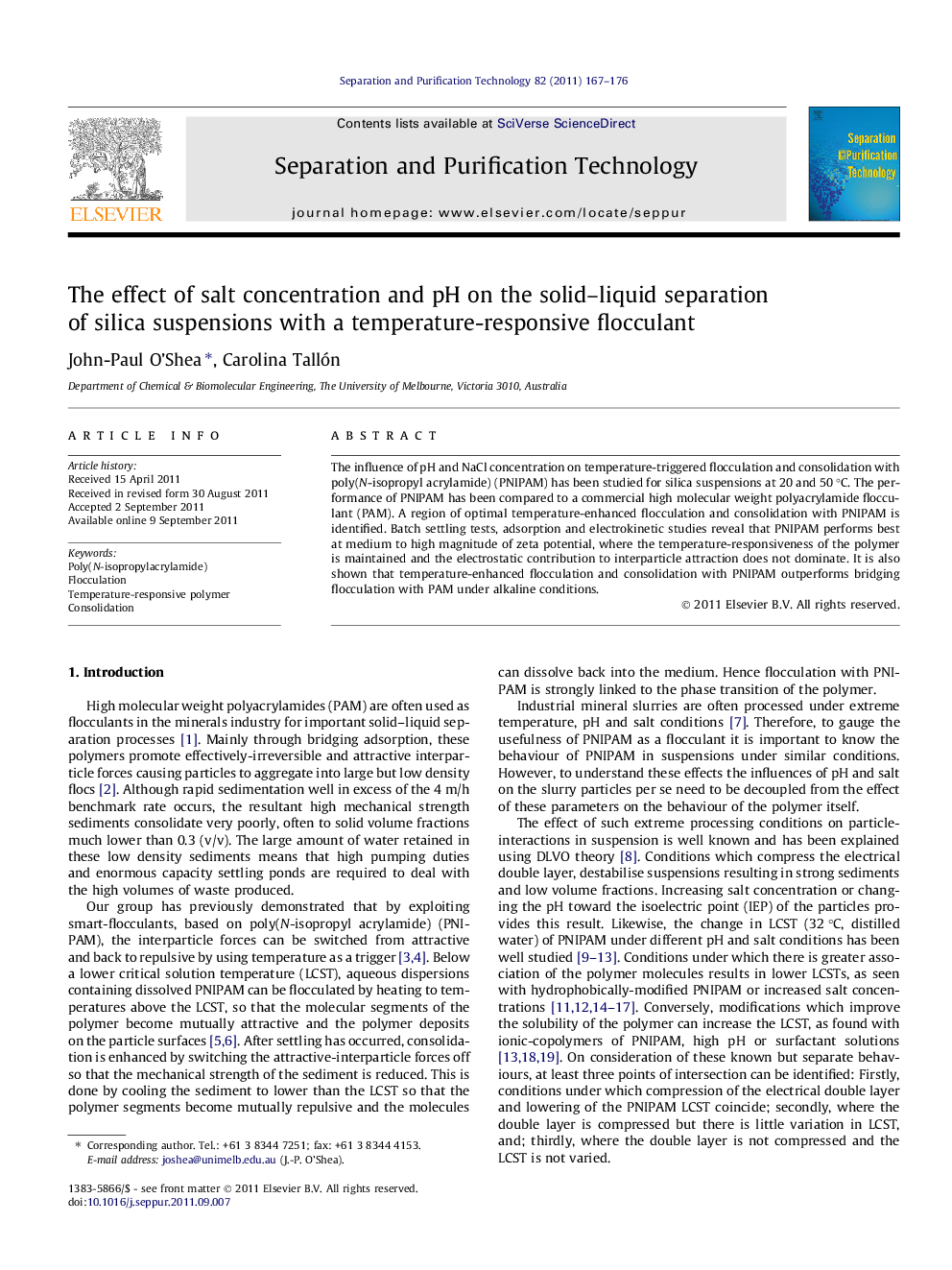| کد مقاله | کد نشریه | سال انتشار | مقاله انگلیسی | نسخه تمام متن |
|---|---|---|---|---|
| 642440 | 1457037 | 2011 | 10 صفحه PDF | دانلود رایگان |

The influence of pH and NaCl concentration on temperature-triggered flocculation and consolidation with poly(N-isopropyl acrylamide) (PNIPAM) has been studied for silica suspensions at 20 and 50 °C. The performance of PNIPAM has been compared to a commercial high molecular weight polyacrylamide flocculant (PAM). A region of optimal temperature-enhanced flocculation and consolidation with PNIPAM is identified. Batch settling tests, adsorption and electrokinetic studies reveal that PNIPAM performs best at medium to high magnitude of zeta potential, where the temperature-responsiveness of the polymer is maintained and the electrostatic contribution to interparticle attraction does not dominate. It is also shown that temperature-enhanced flocculation and consolidation with PNIPAM outperforms bridging flocculation with PAM under alkaline conditions.
The temperature responsiveness of suspensions dosed with PNIPAM varies with solution conditions such as pH and salt concentration. This dependent behaviour falls into different regions of responsive and non-responsive temperature-triggered flocculation and consolidation.Figure optionsDownload as PowerPoint slideHighlights
► The effect of solution conditions on separations with silica suspensions with PNIPAM are studied.
► Separations are efficient where temperature-responsiveness of PNIPAM are maintained.
► Optimal conditions for responsive separations with PNIPAM occur at mid to high zetapotentials.
Journal: Separation and Purification Technology - Volume 82, 27 October 2011, Pages 167–176